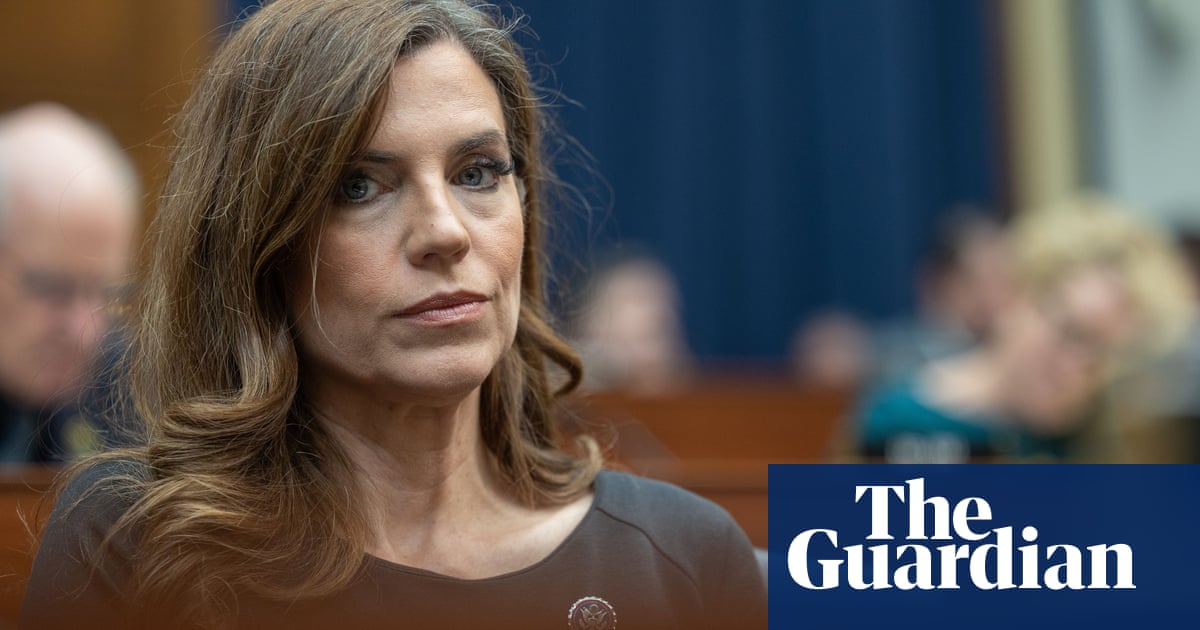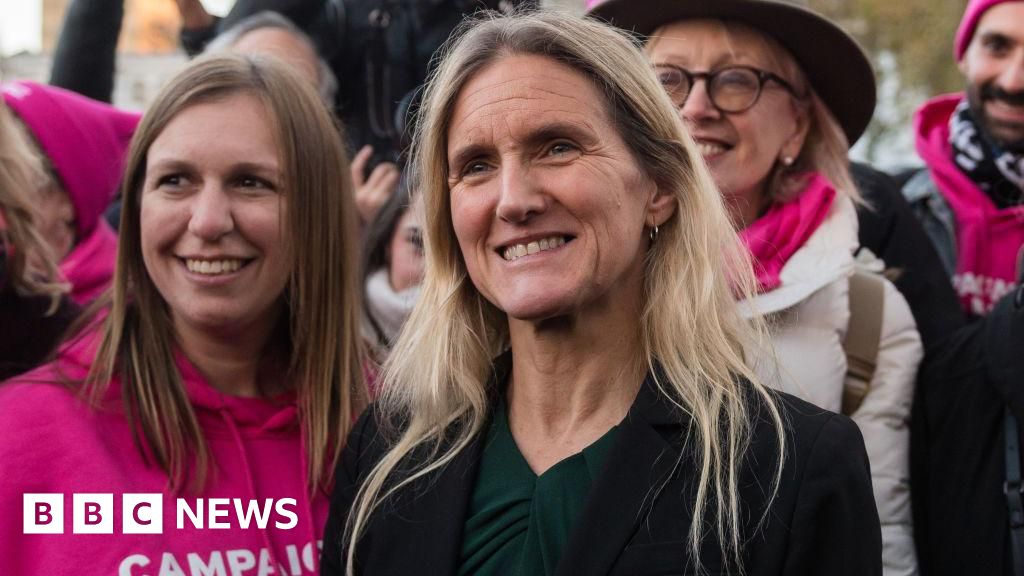A flurry of executive orders and internal directives from Donald Trump’s administration may be putting the safety of Nasa’s crews in jeopardy, sources within the US space agency told the Guardian.
Top-down cuts to the US federal workforce – via buyouts – and staff shortages resulting from resignations due to Trump’s orders on diversity, gender and remote work are further compounding pre-existing staffing concerns about Nasa’s ability to continue operating the International Space Station (ISS) and execute Trump’s ambitious vision for Moon and Mars exploration, the sources said.
“We will pursue our Manifest Destiny into the stars, launching American astronauts to plant the stars and stripes on the planet Mars,” said Trump in his second inaugural address last month.
Trump’s ambitious goal of achieving a human Mars landing by the time he leaves office – let alone safely returning astronauts to the Moon for the first time since the Apollo era more than 50 years ago – will probably require Nasa to rely heavily on contractors, which currently consume about 85% of its funding.
Those contractors include Elon Musk’s SpaceX, which has been awarded contracts worth billions. Cost-cutting concerns, as well as adherence to Trump’s executive orders, sources said, may spread existing staff too thin. Last week, Trump asked Musk to devise a plan to bring two astronauts back from the ISS, despite the fact that Nasa already has a plan to do so.
“Safety remains a top priority for the agency,” said the Nasa spokesperson Cheryl Warner. “We’re continually looking at our staffing to ensure the coverage required to keep our crews safe, while also working to adhere to new executive orders and other guidance from the Trump administration as quickly as possible.”
It’s unclear how many Nasa employees have voluntarily resigned since Trump’s term began, but about 2% of the federal workforce as a whole have already decided to take the buyouts, according to reports.
Nasa’s internal safety panel recently advised the agency to reconsider the timing and cadence of its Moon mission plans because they incorporate brand new designs for space suits, a lunar lander, heat shields and more that have not yet been tested in flight.
“Frankly, there’s very little room for failure,” said Bill Bray, a member of the panel in public comments during the meeting.
Nasa, which is currently led by Janet Petro, its first female administrator, quickly worked to shutter its diversity offices just hours after Trump took office and initiated an agency-wide scrub of terms related to diversity, equity and inclusion following Trump’s executive order on the topic.
“Our agency has complied with the requirements of the executive order and guidance from the US office of personnel management memorandum issued January 21,” said Warner.
The Guardian spoke with several current employees and contractors of Nasa’s space operations division, which is responsible for human spaceflight, about the impact that Trump’s orders are having on morale and productivity there. Identities are not being disclosed out of fear of retribution.
Sources familiar with the operations of Nasa’s mission control in Houston, Texas, say that safety concerns that emerged as a result of Biden-era budget cuts have now heightened with the onslaught of executive orders ranging from a purge of diversity, equity and inclusion (DEI) policies to a blanket return-to-office mandate.
One Nasa contractor said they were instructed to “leave no paper trail” while carrying out the work on removing references to DEI and have begun communicating with their colleagues via secured private messenger. They shared a memo dated 22 January which read, in part: “Per NASA HQ direction, we are required to scrub mentions of the following terms from our public sites by 5 pm ET today. This is a drop everything and reprioritize your day request.”
The memo included broad terms such as “environmental justice”, “Indigenous people”, and “anything specifically targeting women (women in leadership, etc)”.
A further memo from OPM on the evening of 22 January warned of “adverse consequences” if employees did not report their colleagues who they witnessed trying to evade the orders.
A Nasa scientist said they experienced fear and confusion as the memos arrived, and wondered for their colleagues’ safety. “Does someone have a pride flag on their office door?” they said they recalled thinking.
“It’s not a super well kept secret that flight controllers are overworked, underpaid and disrespected by their management,” said a source who previously worked in mission control.
The crackdown on DEI “is going to impact flight ops”, said the source. “Mission control already struggles with certifying and retaining flight controllers, but this is sure to make things worse. And with 24/7 ops for ISS, I worry they can’t take much more attrition and keep the consoles staffed around the clock.”
At any given time, there are only about 20 people who have been trained to perform each of the highly skilled jobs required to keep the ISS operating safely. Training can take years. Specifically, the source said the teams responsible for communications, life support and internal thermal systems on the ISS recently said they could not support further staff reductions and continue 24/7 operations.
For an example of the kind of emergency flight controllers are trained to handle, micro-meteors and bits of space junk, like paint flecks, hit the ISS every day. Several times a year, an impact is large enough that it could cause a safety issue to astronauts. Very occasionally, but as recently as last year, astronauts need to take shelter and prepare to evacuate – following procedures and guidance from mission control.
Statistics show Nasa is the least diverse workplace among the four major science-focused agencies – including the Department of Energy, Noaa and the EPA. About 40% of Nasa’s technical workforce is aged 55 or older.
A report last year by Nasa’s office of inspector general found that “Nasa faces interrelated challenges including an aging civil service workforce and a growing shortfall of employees qualified in technical areas.” Despite expanded DEI efforts under Biden, the report found that “Nasa has made little progress in increasing the representation of women and minorities.”
Trump’s actions to undermine DEI have been “disastrous for our country”, said Greg Chamitoff, a former Nasa astronaut who now teaches at Texas A&M University. “I am sure everyone at Nasa is worried about personal and programmatic impacts short- and long-term.”
Libby Jackson, a former flight director for the European Space Agency and until recently, the head of space exploration for the UK Space Agency, said that if anything, achieving Trump’s goals for space would require leaning further on DEI, not stripping it out.
“I have had times in my life where people have assumed that I don’t know what I’m talking about because I’m the only woman in the room,” said Jackson. “That’s what those policies are about is reminding people of their unconscious biases. I just hope that somewhere in all of this that is recognized.
“At the heart of it, any good team is built on diversity of opinion,” said Jackson. “Having people from different backgrounds, the right skills for the job.”
Jackson said the main takeaways from Nasa’s most tragic failures over the past 50 years – the loss of the Challenger and Columbia space shuttles – was an overreliance on siloed thinking. “Groupthink” – not being willing to listen to differences of opinion – was cited by Nasa specifically in their official accident reviews.
“That’s a dangerous place to be in,” said Jackson.
-
If you have information you’d like to share securely with the Guardian about the impact of cuts to federal programs, please use a non-work device to contact us via the Signal messaging app at (646) 886-8761.

 German (DE)
German (DE)  English (US)
English (US)  Spanish (ES)
Spanish (ES)  French (FR)
French (FR)  Hindi (IN)
Hindi (IN)  Italian (IT)
Italian (IT)  Russian (RU)
Russian (RU)  5 hours ago
5 hours ago
























Comments